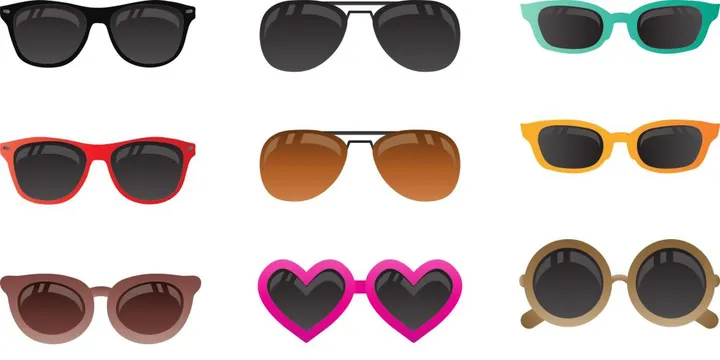
Why Children Need To Wear Sunglasses? How To Choose?
According to the survey, 86.3 percent of the respondents knew that ultraviolet rays can damage their skin. Only 45.1 percent of the respondents knew that ultraviolet light can damage their eyes.
In fact, UV damage to the eye is divided into acute damage and chronic damage. When the eyes are exposed to sunlight for a long time, the damage caused by ultraviolet rays to the eyes will slowly accumulate, causing chronic damage.
Children's corneas and lenses are more transparent than adults, so they are more vulnerable to harmful light intrusion and damage. If you do not pay attention to protection, it may damage the child's cornea and lens, and cause burns to the macular area of the retina, laying a hidden danger for future eye diseases such as cataracts.
So, what are some ways to prevent UV rays?
2.Choose to wear sunglasses that protect against UV rays

But for children wearing sunglasses, I believe parents have many questions.
01
A.Sunglasses are not recommended for infants younger than 3 years of age
Because the physiological development of the eye is unstable and affected by external stimuli, it is not recommended to wear sunglasses.
B.It is recommended that children aged 3-5 wear sunglasses within 2 hours
Children of this age are still in the process of vision development, the stimulation of the external environment has a certain ability to adapt, in the light is relatively strong environment to play, wearing sunglasses can improve the eyes exposed to the sun exposure to the damage, generally controlled within 2 hours.

C.Sunglasses are relatively safe for children 6 years and older
Because the development of the eye is almost adult.
02
A.Consider the harmful light filtering features of sunglasses
The stronger the filtering function, the better the protection effect. Therefore, you should go to the regular optical shop to choose the sunglasses with anti-ultraviolet function produced by the regular manufacturer, and observe whether the lenses, tags or outer packaging of the sunglasses have "100% anti-ultraviolet", "UV400", "anti-ultraviolet" and other signs.

B.Choose tan or gray lenses and try to avoid bright colors
Many people mistakenly believe that the depth of the color of the lens is proportional to the anti-ultraviolet performance, in fact, the depth of the color of the lens only refers to the transmittance of visible light, which can be judged by the naked eye, and the ultraviolet light can not be observed by the naked eye, and the anti-ultraviolet performance of the lens can only be detected by the ultraviolet spectrum analyzer.
Brown: Soft vision, can effectively filter most harmful blue light, slow the development of retinal diseases. Although the color of the object will be distorted, it enhances the contrast and clarity, and the effect is good in haze and cloudy weather.
Gray: universal color, can keep the object color true, effectively reduce the intensity of light. And belongs to the neutral color, can absorb any chromatographic balance, although the scenery will be darkened, but can show the real natural feeling, suitable for outdoor sports.
It is recommended that children choose polarized sunglasses and reflector sunglasses
Polarized sunglasses: In addition to the basic anti-ultraviolet function, it also has anti-glare, road reflection light, water scale light, etc., suitable for driving, fishing, tourism, daily wear. In addition, polarized sunglasses can also be customized with degrees, suitable for short-sighted or far-sighted children. Compared with ordinary sunglasses, it is an ideal choice in terms of improving visual quality.
Mirror sunglasses: the lens is plated with a special reflective film, effectively block glare, suitable for skiing, sea sports and iris defects and other eye disease patients, the disadvantage is poor wear resistance, to good maintenance can be used for longer.
Note: If it is in an environment where ultraviolet rays are not too strong, parents should remind children to take off sunglasses in time.